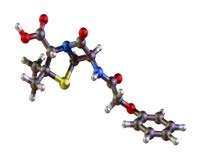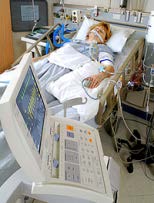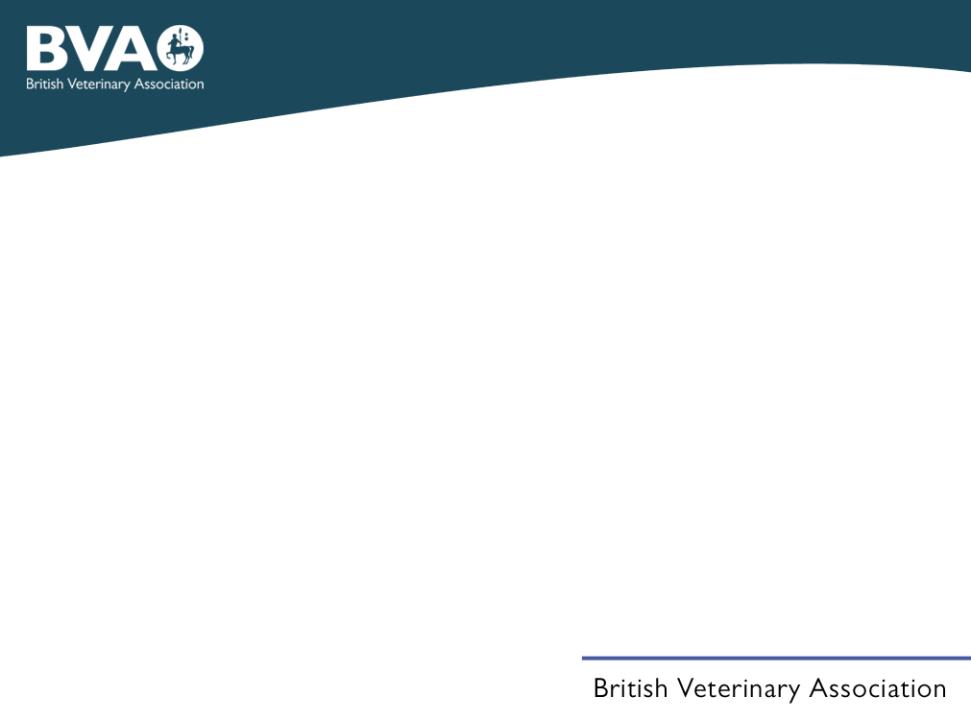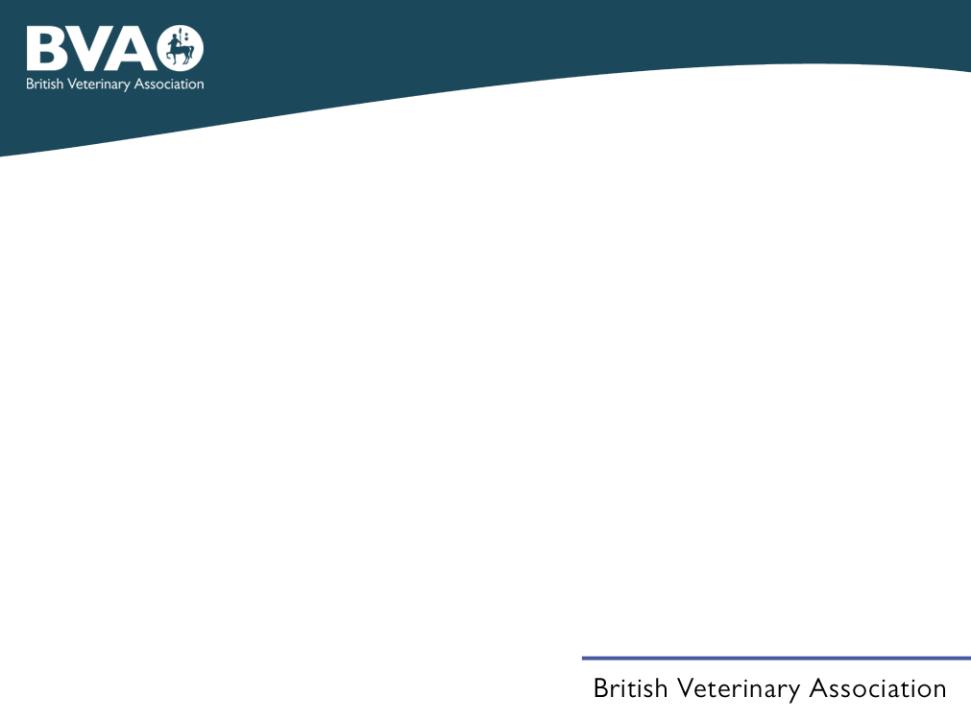Powerpoint presentation

British Society of Animal Science
Does Big mean bad – The Science behind large scale production
The Roslin Institute, Easter Bush Edinburgh 23 – 24 May 2013
Antimicrobial Resistance – Managing the risk
Peter Harlech Jones - President BVA





Is History Repeating Itself?
Are we entering a post-antibiotic era?

Is there a problem- who says?
The use and misuse of antimicrobials in human medicine and animal husbandry over the past 70 years has led to a relentless rise in the number and types of microorganisms resistant to these medicines - leading to death, increased suffering and disability, and higher healthcare costs
World health Organization (WHO) 2010
The inappropriate use of therapeutic antimicrobials in human and veterinary medicine, the use of antimicrobials for non-therapeutic purposes as well as the pollution of the environment by antimicrobials is accelerating the emergence and spread of resistant microorganisms. The consequences are severe.
Communication from the Commission to the European Parliament and the Council Action plan against the rising threats from Antimicrobial Resistance COM (2011) 748. November 2011
Worldwide, the fact that greater quantities of antibiotics are used in healthy animals than in unhealthy humans is a cause for great concern. – Dr. Margaret Chan Director General WHO March 2012

Is there a problem- who says?
The threat posed by resistance to antibiotics should
be ranked alongside terrorism on a list of threats
to the nation, the Government's Chief Medical
Officer has said.
The problem is a "ticking time bomb" and should
be put on the National Risk Register — which also
includes "catastrophic terrorist attacks" and other
civil emergencies, Prof Dame Sally Davies said.
– Multidrug resistant (MDR) organisms
– Gram- e.g Salmonella and Gram+ e.g MRSA
– No new products in the R&D pipeline
– Infection with ESBLs not responding to treatment
– In human medicine the biggest problem is over
prescribing in man
……….and in veterinary medicine?
• The situation is far less of a concern because resistance
is not causing a real crisis with most conventional antimicrobials still being very effective in all species
• The real concern is the threat from a mismanagement of
the situation in man leading to disproportionate application of the precautionary principle leading to restrictions being applied to use of newer antimicrobials in animals
• Nevertheless the risk of zoonotic transfer of resistant
organisms is recognized and is/must be addressed
Why is this such a problem….for
• UK Chief Medical Officer
in 2008 suggested that veterinarians should be banned from prescribing certain classes of antimicrobials including fluoroquinolones and 3rd/4th generation cephalosporins
Why is this such a
problem….for vets?
"BVA and FVE fight to save vets' right
to dispense medicines" April 2011
The British Veterinary Association (BVA)
and Federation of Veterinarians of
Europe (FVE) have successfully seen off an attempt by MEPs to restrict the ability of vets to dispense veterinary medicines directly to farmers and other animal owners.
The problem however came back!
"The European Parliament on
December 6th 2012 adopted a
resolution calling on vets to be
prevented from the dispensing of
antimicrobials
Why is this such a problem?
Highly effective control option to reduce selective ESBL/AmpC
producing bacteria at an EU level would be to stop all uses of
cephalosporins/systemically active 3rd/4th generation cephalosporins
or restrict their use
Scientific Opinion on public health risks of bacterial strains producing extended-spectrum beta-lactamses and/or Amp/C beta-lactamases in food and food producing animals; European Food Safety Authority (EFSA) panel on Biological Hazards. EFSA Journal 2011;9(8):2322
All this despite the collective data of the available studies revealing considerable differences in ESBL types between poultry and humans in Europe, leaving the question open as to what extent livestock contributes to the spread of ESBL in humans
Personal communication Chris Teale AHVLA UK
All this despite no ESBLs having been found in Salmonella isolates from diagnostic submissions from pigs, sheep and chickens in UK and cattle ESBL isolates showing a reduction in the proportion of isolates carrying CTX-M-15 the ESBL primarily being detected in human ESBL E coli
Personal communication Chris Teale AHVLA UK
All this despite there being few studies that describe clear evidence of direct transmission of ESBL or AmpC- producing E. coli isolates from food-producing animals or food to humans.
EFSA Journal 2011;9(8):2322
Why then is this such a problem for all of us?
"Last year a Soil Association report estimated that 60,000 human ESBL E.Coli infections occur each year in the UK and showed there is now overwhelming scientific evidence that antibiotic use on farms contributes significantly to the spread of resistant E coli in humans"
What is happening in Europe?
What does the Commission Action Plan recommend?
Action 2. Strengthen the regulatory framework on veterinary medicines and medicated feed
Action 3. Introduce recommendations for prudent use in veterinary medicine
Action 4 Introduction of new Animal Health Law which will focus on prevention of diseases, reducing the use of antibiotic
Action 7 Promote efforts to analyse the need for new antibiotics into veterinary medicine
Action 10 Strengthen surveillance systems on AMR and antimicrobials consumption in animal medicine
Action unknown: New European Regulation on authorisation of veterinary medicines expected before 2014
Some important questions to consider? Have legal/regulatory controls in the EU helped to minimise antimicrobials resistance? What lessons have we learnt? What is the veterinary profession doing about it? What more do we need to do?
Question 1: Legal/regulatory controls on antimicrobial use:
Developments in Denmark after the growth promoter ban in the nineties
What happened to resistance to therapeutic
antimicrobials after the GP ban
Outcome of severe restriction on use of fluoroquinolones in Denmark
Outcome of severe restriction on use of fluoroquinolones in Denmark
What trends are prevalent in the use of
fluoroquinolones in humans in Denmark?
INCIDENCE OF RESISTANCE TO FLUOROQUINOLONES IN CAMPYLOBACTER IN MAN
FOLLOWING THE BAN ON ENROFLOXACIN IN THE USA IN 2005
Enrofloxacin banned in the US for poultry in 2005
And the latest news from Denmark?
Danish pig producers using more antibiotics. After years of decline, treating
sick pigs with antibiotics increased 5.5 percent in 2012: Release Date: 6 March
2013: WATT AgNet.com
"It is alarming that there are so marked an increase in antibiotic consumption
for pigs," emphasizes Denmark's minister for food and agriculture," says Mette
Gjerskov,Denmark's minister for food and agriculture."Obviously sick animals
are treated, but it is vital to keep the consumption of antibiotics as low as
possible. Heavy consumption of antibiotics leads to more and more bacteria
become resistant to antibiotics. And it puts us in a situation where we have
trouble treating sick people."
2. What lessons have we learnt?
The pressures keep on coming?
Restrict or eliminate the use in food-producing animals of antimicrobials identified as critically important in human medicine, especially the use of fluoroquinolones, and third- and fourth- generation cephalosporins
WHO World Health Day 2011 Reduce Use of antimicrobials in Food Producing Animals
In order to contain antimicrobial resistance in man the use of 3rd/4th generation cephalosporins and fluoroquinolones in veterinary medicine should be prohibited
Health Commission report on antimicrobials resistance in the Netherlands 2011
In CVMP's view a global (EU)-strategy on antimicrobial resistance is urgently needed. The management of this problem for society cannot be left only to the prescribing veterinarian, who is faced with sick animals, it can also not be left on the shoulders of the farmer
– CVMP antimicrobials resistance strategy 2011 – 2015
The Alliance report shows that …….drawing on Assessments by WHO and EFSA…. for some human infections such as salmonella and campylobacter, farm antibiotic use is the principle cause of resistance in man. For others like E. Coli (that cause urinary tract and blood poisoning infections) it contributes significantly to human treatment problems
Soil Association press release 11th March 2013: Government must act to reduce farm antibiotic use
2. What lessons have we learnt, or are learning?
probabilities that they
AMR genes do exist
will transfer AND
in animals = HAZARD
cause significant
??? problems in humans=
What is the risk that the animal reservoir is a significant contributor to the problem of AMR in human pathogens?
There may be some good news!
" Increasing scientific evidence suggests that clinical issues we face in human medicine are primarily the result of antibiotic use in people, rather than the use of antibiotic use in people" 7
European Centre for Disease Control (ECDC) Fact Sheet 2011
"Antibiotic use is not limited to humans and a large quantity of antimicrobials are used every year in veterinary practice and the fishing and farming industries. While the current evidence suggests that this is not a major cause of resistance in bacteria that affect human health (at least in the UK), it does provide a further vehicle for the development of antimicrobial resistance"
Annual Report of the Chief Medical Officer Volume Two 2011
3. What should the veterinary profession doing about it?
Lobbying hard against bad law which does not solve the problem
Challenging misconceptions about the causes of resistance
Arguing for management of resistance to be based on sound scientific risk assessment and not the precautionary principle
Promoting stricter conditions in best practice for the use of certain categories of antimicrobials, which have special importance in human medicine (e.g. fluorquinolones and 3rd-4th generation of cephalosporins)
Encouraging better animal health management on farm to reduce the need for antimicrobials
Reinforcing the message and campaigning to raise awareness
of the crucial importance of evidence based responsible use
supported by appropriate guidelines
3. contin. – how we are influenced in our choice?
Customer pressure to supply antimicrobials
Product availability and reliance on the cascade
Economical drivers: a good thing, - maybe not in dairy?
Veterinarian attitude/customer relationship:
Withdrawal periods in treatment of food animals
Herd health planning, - takes time and effort
Planning is important in companion animal practice too
Administration (medicated feed & long acting formulations)
4. What more do we need to do?
Need to further scrutinise our methods of using antimicrobials and minimise our reliance on them
Every vet must be made aware of the problem
– training, education, guidelines: - NO EXCUSE FOR INACTION
Every vet should be held accountable for which antimicrobial used
– RCVS New Code of Professional Conduct
– Clinical governance, health protocols
Be ever vigilant as the profession continues to come under fire
Continue to campaign in Europe through FVE: more battles ahead
Encourage World Veterinary Association to constantly wage an aggressive campaign
Reinforce the message that the major problem lies with over-use in the medical sector (draft DoH 5 year strategy), but also play our part
This is where alliances matter
Working together
RUMA POSITION STATEMENT ON THE PREVENTIVE USE OF
ANTIMICROBIALS IN FARM ANIMALS
Curative treatment (also referred to as Therapy)
Treatment of sick animals, either individually or as a group.
Control treatment (sometimes referred to as Metaphylaxis)
Treatment of (mostly groups of) animals in close proximity to infected animals, before appearance of clinical symptoms. This refers to situations when disease symptoms have appeared in (an)other animal(s) in close contact (group or barn mate(s)) and it is known that this disease is infectious. The animals/groups in which the symptoms have appeared may already show elevated morbidity and mortality rates.
Preventive treatment (sometimes referred to as Prophylaxis)
Exceptional treatment of (mostly groups of) animals before infection, based on high likelihood of becoming infected in the near future, e.g. respiratory diseases after regrouping, colibacillosis during post-weaning, shipping fever following transport, etc.
…….and with our European partners?
Remember these folk? they're at it again
COMPROMISE AMENDMENTS 1 - 10 Draft
report Anna Rosbach (PE486.077v01-00) on the
Microbial Challenge - Rising threats from
Antimicrobial Resistance (2012/2041(INI))
4a. Considers that the pending revision of
Directive 2001/82/EC offers an important
opportunity to take effective measures to reduce
AMR through strengthening the provisions for
veterinary medicines, such as: - limiting the right
to prescribe antimicrobials to professionally
qualified veterinarians only; - separating the
right to prescribe from the right to sell
antimicrobials thus eradicating economic
incentives to prescribe.
ADOTED IN BRUSSELS 6 NOVEMBER 2012
How can the veterinary profession regulate the
use of antimicrobials?
• Through the RCVS Code of Professional Conduct
• 1. Veterinary surgeons and animals
• 1.5 Veterinary surgeons
who prescribe, supply and
administer medicines must
do so responsibly.
Code of Professional Conduct
- supporting guidance
The development and spread of antimicrobial resistance is a global public health problem that is affected by use of these medicinal products in both humans and animals.
Veterinary surgeons must be seen to ensure that when using antimicrobials they do so responsibly, and be accountable for the choices made in such use.
Ensure compliance through the
Practice Standards Scheme PSS
All practices must comply with the core standards of the practice standards scheme
Inspectors will be assessing practices' compliance with responsible used guidelines and for practices not in PSS, VMD inspectors will be checking for adherence to responsible use guidelines
RCVS has amended the current PSS manual to to include the revision under section 8, Medicines, which reads: A practice must be able to demonstrate that when using antimicrobials or anthelmintics, it does so responsibly and is accountable for the choices made in such use
Questions in the guidelines for inspectors
How do you work with clients to avoid the need for
antimicrobials?
How do you avoid inappropriate use?
How do you ensure that the appropriate antimicrobial is used?
What is the practice policy on monitoring antimicrobial
sensitivity?
How do you minimise prophylactic use?
Does the practice use antimicrobials peri-operatively? If so,
how is this justified?
Do you record deviations from antimicrobial protocols?
Is there a reporting system in place for suspected treatment
failure?
The message is clear…if we don't change, then
others will do it for us
The use of antimicrobials in the future will be
different to how we use them now and with certain constraints on certain classes and on when we use them
Thank you for your attention
Source: http://bsas.org.uk/wp-content/uploads/2013/05/Day1_15.00_JonesPeter.pdf
The Gender Politics of Criminal Insanity: "Order-in-Council" Women in British Columbia, 1888–1950 DOROTHY E. CHUNN* Between 1888 and 1950, 38 women were confined for indeterminate periods toBritish Columbia's psychiatric system under executive "Orders-in-Council".Enlisting clinical, organizational, and government records, the authors explore thepsychiatric practices of control through which a male medico-legal establishmentstrove to comprehend and discipline these "criminally insane" women. Theauthoritative discourses and activities that shaped these women's forensic careersreflected a gendered conception of social order that was hegemonic during thisperiod. Such discourses helped to fashion the images of women, crime, and madnessthat continue to permeate public and official culture.
Applying the Alaska model in a Resource-Poor State: The Example of Vermont (This is an early version of a paper later published as a chapter in: Exporting the Alaska Model: Adapting the Permanent Fund Dividend for Reform around the World. Eds. Karl Widerquist and Michael Howard. Palgrave-Macmillan, St. Martin's Press, NY, NY 2012. Pages 85-107)








